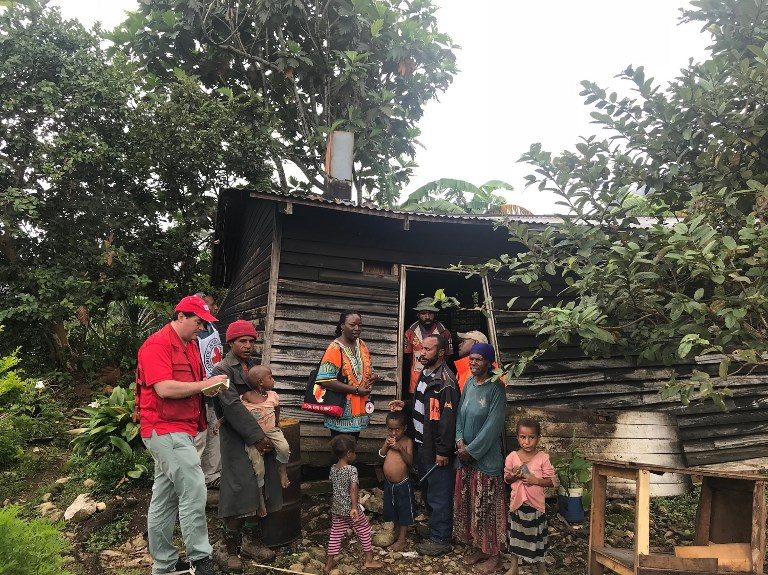SUMMARY
This is AI generated summarization, which may have errors. For context, always refer to the full article.

SYDNEY, Australia – Critical relief supplies are finally flowing into areas of Papua New Guinea devastated by a strong earthquake, Prime Minister Peter O’Neill said, as another 6.7-magnitude tremor rocked the region Wednesday, March 7.
At least 67 people were killed by the initial quake in the Pacific nation’s mountainous interior on February 26, according to the Red Cross, with 500 injured and 17,000 displaced.
Aid has yet to reach isolated parts of the Southern Highlands, Western, Enga and Hela provinces, with landslides, ruined roads and dozens of aftershocks hampering efforts.
But O’Neill told reporters food, water and medicine was starting to get through, with aircraft ferrying supplies to Moro and Mendi airports in the Southern Highlands.
“We are now in the process of delivering emergency supplies,” he said late Tuesday, March 6.
“Over the last few days, we’ve been working with the Australian government, with Exxon(Mobil), with Oil Search and Ok Tedi in particular, in making sure that immediate assistance required by the communities is delivered.”
Australia and New Zealand have pledged aid, while Israel has delivered 40 generators to help restore power.
The rugged terrain has made delivering relief supplies difficult with the Red Cross working to reach the Nipa-Kutubu district near the epicenter to assess damage and needs, said the group’s PNG secretary general Uvenama Rova.
“Red Cross teams have been able to assess and support communities in other parts of the country, but access to parts of Nipa-Kutubu has been impossible because lines of communication have been severed and roads damaged,” said Rova.
International Red Cross PNG country head Udaya Regmi added: “We are anxious to reach communities while there is a lull in what is usually a season of heavy rain.
“A big downpour could bring landslides in hillsides already destabilized by the earthquake, cause floods and contaminate water.”
Local MP James Marape told The National newspaper there had been more than 50 aftershocks so far, with people too scared to sleep in their homes, fearing they will collapse. Instead they are spending the nights outside.
There were no immediate reports of any fresh damage from the 6.7-magnitude earthquake – the strongest aftershock so far – that rattled the region early Wednesday morning.
“The effects of the continual tremors are both physical and psychological,” said Marape, speaking from Tari, adding that at least 11 people had died in landslides in the area.
“For the last two nights, I have been witnessing people out in the cold and rain, fearing to go into their houses in case the earthquake strikes again.”
Accounts of last week’s disaster continue to emerge with local media reporting on a 9-year-old girl, Jerina Peter, who was thrown to safety by her father from a cascading landslide before he was swept away.
The girl’s mother and two sisters also vanished in the torrent of mud in Puinj village.
Australian officials based in the country have said it was the biggest earthquake to hit the highland region in a century. No official government death toll has been released. – Rappler.com
Add a comment
How does this make you feel?
There are no comments yet. Add your comment to start the conversation.